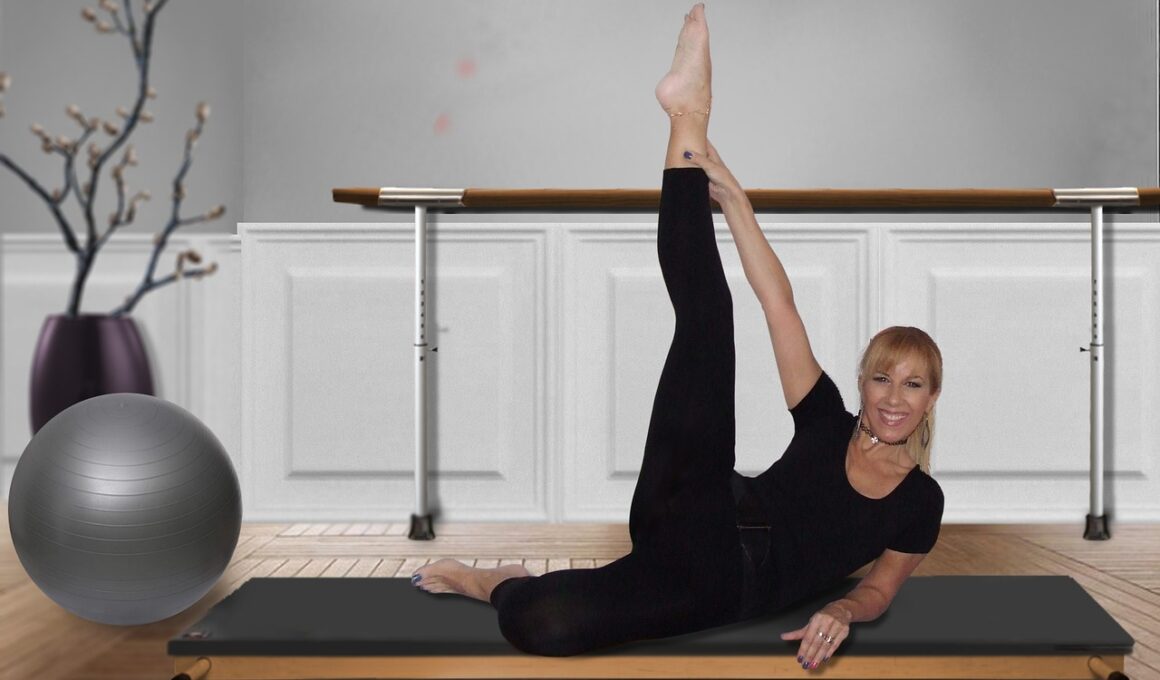The Role of Pilates in Physical Therapy History
Origins of Pilates trace back to the early 20th century, when Joseph Pilates designed a unique system of exercises. This approach aimed to enhance physical strength, flexibility, and mental awareness. Initially named “Contrology,” Pilates drew inspiration from various movement disciplines, including gymnastics and yoga, as well as rehabilitation practices. The primary objective was to help individuals regain physical abilities following injuries. This innovative method gained traction among dancers, athletes, and eventually physical therapists. As the late 20th century approached, medical communities began recognizing the healing properties of Pilates. Therapists incorporated Pilates principles into rehabilitation programs due to their effectiveness and holistic approach. Furthermore, the development of specialized equipment, like the Reformer and Cadillac, offered targeted support during therapy sessions. Patients began to see significant improvements in their strength, coordination, and posture. This relationship established a strong educational and practical link between Pilates and physical therapy. By viewing the body as an integrated whole, therapists effectively utilized Pilates as a tool for recovery and rehabilitation.
As Pilates gained popularity, its principles influenced physical therapy frameworks across the globe. The emphasis on core stability and body alignment resonated with therapeutic approaches. Therapists adapted the Pilates method to create customized rehabilitation programs for various disabilities. This practice nurtured a growing interdisciplinary collaboration among professionals. The focus on enhancing proprioception and movement awareness played a significant role in rehabilitation. Pilates exercises help improve muscle memory and body awareness, making them ideal tools for physical therapists. Equipment like the Reformer allowed patients to strengthen specific muscle groups. With the help of springs and pulleys, patients could perform targeted movements that were difficult to execute otherwise. Rigorous training programs emerged for therapists to master Pilates methodologies. These included workshops, certifications, and educational sessions on integrating Pilates into therapy. Many physical therapy practices now have specialists trained in Pilates techniques. This shift reflects the growing understanding that movement is essential for maintaining overall health, especially after injury or surgery.
With the expansion of Pilates in rehabilitative settings, various studies began validating its benefits. Research showed how Pilates improves flexibility, reduces pain, and enhances athletic performance. These findings contributed to greater credibility within medical communities, and thus a wider acceptance of Pilates as a therapeutic tool. Specifically, studies highlighted its effectiveness for individuals with back pain, joint issues, and post-surgical rehabilitation. In addition, the ability to tailor Pilates exercises made them applicable across demographics. All age groups, from children to seniors, have benefited from these practices. As therapists incorporate individualized Pilates routines into treatment plans, they observe encouraging progress in their patients. The philosophy of building strength from the core promotes safe injury recovery. Many individuals now view Pilates not just as an exercise regimen, but as a beneficial therapeutic approach. The endorsement by physical therapists adds to its credibility. Consequently, awareness of Pilates has spread beyond rehabilitation to general health and wellness, leading more people to explore its life-changing potential.
Challenges and Adaptations
Despite its many benefits, challenges remain in integrating Pilates into mainstream physical therapy. A fundamental concern stems from the levels of training and expertise among instructors and physical therapists. Not all professionals are adequately trained to adapt Pilates for specific therapeutic contexts. This disparity highlights the need for standardized certifications. Moreover, misconceptions about Pilates persist, as some individuals still regard it merely as an exercise fad. Continued education is vital for both therapists and the public. Practitioners must articulate how Pilates differs from traditional fitness regimes, focusing on its rehabilitative qualities. Furthermore, equipment accessibility can pose challenges in treatment settings. While a Reformer is highly beneficial, not every therapy practice can access such equipment, limiting the exercise’s availability to all clients. Affordability is another factor inhibiting widespread Pilates integration. However, therapists have demonstrated adaptability by using simple mat exercises or resistance bands, which require minimal equipment. Flexibility in approach enables therapists to harness Pilates principles effectively in a variety of settings.
In recent years, advancements in technology have further enhanced the role of Pilates within physical therapy. Virtual classes and online resources have emerged, increasing accessibility for patients. Telehealth options empower therapists to guide remote sessions, allowing individuals to continue their rehabilitation from home. The incorporation of digital tools also streamlines monitoring patient progress. Online platforms facilitate communication between patients and therapists, improving engagement. As patients can now follow guided sessions on their schedules, they maintain motivation and accountability in their recovery journey. Moreover, social media amplifies the sense of community among Pilates practitioners and therapists. Sharing success stories, tips, and challenges enhances awareness. This shift towards virtual therapy provides a solution to limitations previously encountered. Additionally, research into the efficacy of online Pilates classes is ongoing. Preliminary results suggest that virtual instruction can create positive outcomes, further reinforcing Pilates’s value in rehabilitation. Together, these trends redefine how Pilates is perceived and practiced, ensuring its relevance in today’s rapidly changing healthcare landscape.
Looking towards the future, the integration of Pilates in physical therapy is bound to evolve. As awareness grows, educational institutions will likely enhance their curricula to include Pilates methodologies. This incorporation will better prepare new therapists for modern rehabilitation practices. Continued collaboration between physical therapists and certified Pilates instructors could lead to innovative therapeutic approaches. Additionally, more comprehensive evidence-based research studies will further validate Pilates as a core component of rehabilitation programs. Stakeholders such as healthcare organizations will promote training for therapists interested in adding Pilates to their skill sets. Advances in technology may also inspire new Pilates-focused rehabilitation tools. For example, wearable technology can track physical activity and provide feedback on exercise forms in real-time. Such developments can optimize patient outcomes and enhance their overall experience. Future practitioners must remain adaptive, embracing changes in rehabilitation paradigms. Ultimately, the lasting legacy of Pilates in physical therapy lies in its origins as a healing practice. The ongoing recognition of its benefits will continue to shape not just rehabilitation, but overall wellness paradigms.
In conclusion, Pilates has significantly influenced the evolution of physical therapy. Initially conceived as a method for personal enhancement, it transformed into a vital rehabilitation tool. The multifaceted benefits of Pilates—strengthening core stability, improving flexibility, and enhancing body awareness—make it uniquely suited for therapy practices. Through interdisciplinary collaborations, therapists have effectively integrated Pilates across various treatment settings. With ongoing research validating its effectiveness, its role in rehabilitation will only expand. Nevertheless, challenges such as education and accessibility must be addressed for optimal implementation. Further development in training, technology, and community engagement will bolster Pilates’s application. As awareness grows, so will the recognition of its immense potential in not only recovering but also maintaining one’s health. By embracing the principles of Pilates, both therapists and clients can work together towards holistic wellness. The story of Pilates is far from over; it continues adapting to fit the evolving needs of individuals seeking rehabilitative care. Thus, its journey remains an inspiring testament to the power of movement in healing.
As Pilates gained popularity, its principles influenced physical therapy frameworks across the globe. The emphasis on core stability and body alignment resonated with therapeutic approaches. Therapists adapted the Pilates method to create customized rehabilitation programs for various disabilities. This practice nurtured a growing interdisciplinary collaboration among professionals. The focus on enhancing proprioception and movement awareness played a significant role in rehabilitation. Pilates exercises help improve muscle memory and body awareness, making them ideal tools for physical therapists. Equipment like the Reformer allowed patients to strengthen specific muscle groups. With the help of springs and pulleys, patients could perform targeted movements that were difficult to execute otherwise. Rigorous training programs emerged for therapists to master Pilates methodologies. These included workshops, certifications, and educational sessions on integrating Pilates into therapy. Many physical therapy practices now have specialists trained in Pilates techniques. This shift reflects the growing understanding that movement is essential for maintaining overall health, especially after injury or surgery.


